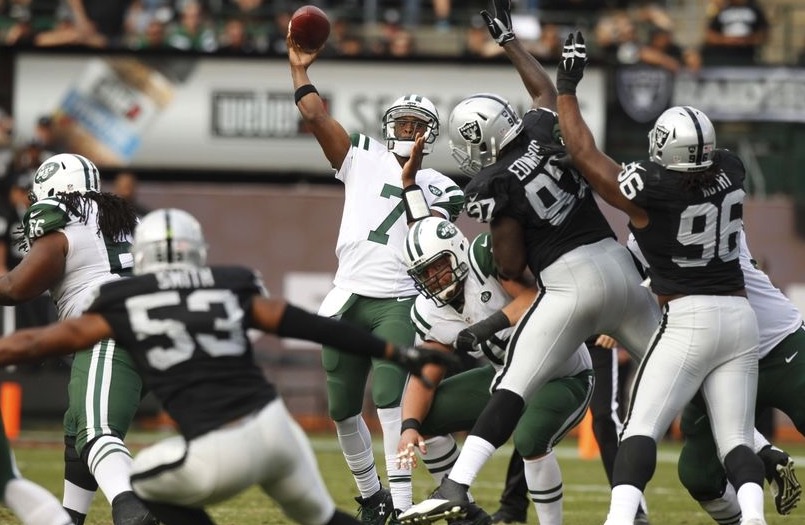One of the most popular sports in America is football. In fact, many cities devote all of their nightly activities to the game. It pulls in millions of fans glued to their TV screens or watching in the stadiums. Yet, the industry is often complex and riled with uncertainty. We give a few examples of the absurd relationship between the NFL, the team owners and the cities.
The Oakland Raiders
It seems this once-popular team does not even have a home. As of 2016, the most promising prospect is a move to Las Vegas. Recently, the Southern Nevada Tourism Infrastructure Committee held a meeting in order to locate possible sites for a 65,000-seat stadium. Due to the cost of land, the price could be as much as $2.1 billion. Raiders owner Mark Davis said he did not care about the exact location but would like natural grass on the playing surface and a retractable dome. It can be heartbreaking for die-hard Raiders fans to see their beloved team leave the state of California.

Yet, the Nevada committee is already looking into nine sites. Two of them are near the University of Las Vegas and between 42-and-65-acres. Another option is the 47-acre site that was once home to the now-demolished Riviera Hotel & Casino. Since Vegas has its fair share of open land, another possibility is the 50-acre location that is currently Cashman Field. The Triple-A baseball team, Las Vegas 51s calls it their home, but they are moving to a new area in Summerlin, Nevada. Plus, there is a 62-acre site across the Mandalay Bay hotel. So, it seems there are many choices. Hopefully, one of them will stick. Yet, even if the Raiders do move to Las Vegas, it will be several years before a stadium is built. So much anticipation and planning that does not even have promised results.
The Buffalo Bills
Many think it is critical for the Bills to replace Ralph Wilson Stadium. Although owners, Terry and Kim Pegula have no definite plans for a new stadium. Yet, several NFL owners believe this is highly important. Shad Khan, owner of the Jacksonville Jaguars thinks that a new stadium will bring the fans. The purpose is to make it more competitive in a world with countless distractions. Some of the competition includes the HDTV game-day atmosphere. As a result, the league does play an active role in construction of new stadiums as it affects everyone’s bottom line. Although, the Bills have six years left on their lease for Ralph Wilson Stadium. It seems the Pegulas have time to make a final decision. Hopefully, it will be a popular one.
The Minnesota Vikings
Thankfully, they will finally get a new stadium with a ribbon cutting on July 22. The U.S. Bank Stadium will serve the future of the 55-year-old franchise still wanting to win a Super Bowl title. In fact, it cost a whopping $1.1 billion to build.
Yet, Gov. Mark Dayton affectionately named it “the people’s stadium.” The structure is contemporary, futurist even, encased in glass that look like mirrors. Vikings vice president Lester Bagley started petitioning for a new stadium back in 2000. Owners Zygi and Mark Wilf contributed $477 million to the stadium. State taxpayers paid $348 million. Many Minnesota residents were up in arms about paying taxes to help build a stadium for a national franchise that already rakes in billions in revenues.
Moreover, the Wilfs bought the team for 600 million in 2005. Today, the Vikings are worth $1.6 billion. U.S. Bank will pay $220 million over two decades to have its name on the stadium. The good news is 60,000 seats have already been sold for the fall season. This month, there are just 3,250 single-game tickets that will go on sale. Furthermore, the Vikings will have their first preseason game on Aug. 28 against the San Diego Chargers who are experiencing their own stadium woes.
The San Diego Chargers
Although the Chargers are staying in San Diego for the 2016, it is unclear where they will be in 2017. The team has an agreement with the Los Angeles Rams to move to Inglewood, California in 2017. Essentially, they will share a stadium with the Rams. Chairman Dean Spanos hopes to keep the Chargers in San Diego, but that may or may not happen.
If the Chargers do move, they will pay $1 per year to play in the Inglewood stadium planned for the Rams. Stan Kroenke, who owns the Rams, intends to build the most expensive stadium in United States history. Surrounding the stadium is 298-acres, where he plans to make his money from mixed-use development. In addition, the Inglewood stadium isn’t scheduled to open until 2019. The deadline for the Chargers to relocate to L.A. is Jan. 15, 2017. If the Chargers don’t make a decision, the option will be opened up to the Raiders.
New stadiums bring in fans and money. They also help to keep a team in place. Yet, they cost money and some taxpayers don’t want the added burden. So, it is a complex and somtimes-absurd situation for all NFL teams involved.







